The Secret of Tesla's New Model S Becoming the Most Mass-produced Car
A few days ago, Tesla held the first delivery ceremony of the new Model S at the Fremont plant in California. Tesla has redesigned the vehicle engineering of the new Model S. Judging from the body-in-white released on Tesla's official website, the entire body has been extensively redesigned. The most obvious is that the same integrated die casting process as Model Y is adopted for the rear body instead of different parts.
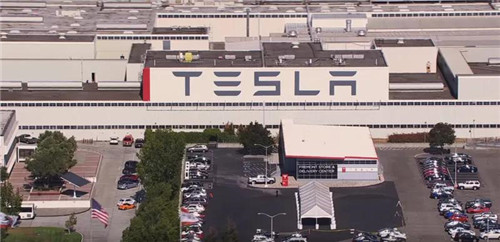
Tesla's Fremont plant in California
On September 22, 2020, at the Tesla's Battery Day conference, Musk introduced that Tesla Model Y would adopt an integrated die-cast rear floor assembly, which could reduce the weight of the lower car body assembly by 30%, and the manufacturing cost was decreased by 40%. In addition, Tesla's next plan was to use 2 to 3 large die casting parts to replace the entire lower body assembly composed of 370 parts. The weight would be further reduced by 10%, and the corresponding driving mileage could be increased by 14%.
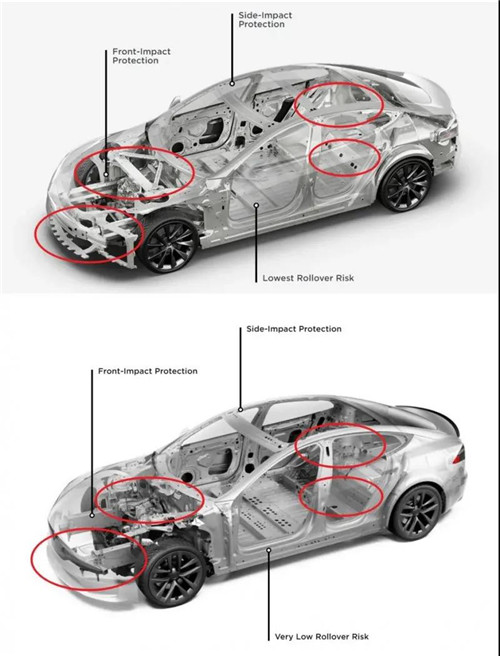
With the delivery of the first batch of brand-new Model S at Tesla's California Fremont plant, it means that Tesla is one step closer to replacing the entire lower body assembly composed of 370 parts with 2 to 3 large die casting parts. The battle of Tesla using one-piece die casting technology to challenge the traditional stamping and welding processes of the automobile manufacturing revolution has begun.
It is worth mentioning that the stamping workshop of traditional automobile manufacturers is mainly responsible for the production of large-scale outer covers with high-quality requirements, such as side panels, engine covers, fenders, door outer panels, etc. The internal structural parts are manufactured by suppliers all over the country and purchased by main engine plants.
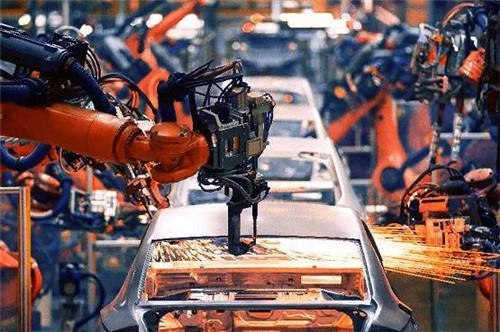
Traditional welding of automobile production
After the workers of the welding shop receive the covering parts from the stamping shop and the supplier's structural parts and sub-assemblies, they assemble or connect them to form the body-in-white assembly (BIW) of the car. The connection here includes welding, riveting (used at the steel-aluminum lap joint) and gluing (Sealant is responsible for sealing, and structural glue is responsible for bonding). The painting workshop is responsible for the anti-corrosion and painting of the BIW after the welding is completed, and the assembly shop is responsible for assembling the electrical, interior and exterior decoration, power assembly and other components onto the painted BIW. Tesla's new Model S adopts the same integrated die casting process as Model Y. All parts are made by a die-cast process at once. The number of parts is reduced by 79 compared to Model 3, and that of the welding spot is reduced from 700 to 800 to 50. Tesla's integrated die-cast rear floor assembly does not require heat treatment due to the use of the new alloy. The manufacturing time of the traditional process is from 1 to 2 hours, and the new integrated die casting process is reduced to 3 to 5 minutes. The rear floor assembly can be directly supplied in the factory.
This means that from the review of suppliers, procurement of stamping parts, manufacturing of stamping dies, use of stamping equipment to the manufacturing of welding fixtures, use of welding guns, development of inspection tools, and the logistics and transportation of parts, all traditional stamping and welding supply chain have been canceled.
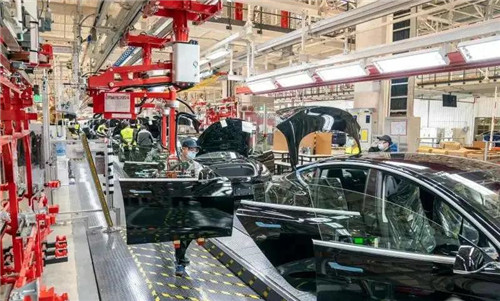
There was a lot of controversy for Tesla's integrated die casting parts concerning materials, processes, and mold design. In terms of structure, the more complex the part and the more severe the changes in molded surface and cross-section are, the higher the requirements for structural parameters such as draft angles, insertion angles, vents, ejection methods and shrinkage directions are higher. Speaking of the process, the larger the size and the greater the thickness of the die casting part are, the more stringent the control of the process parameters becomes, such as filling cavity speeds of liquid metals, fluid states, injection specific pressure and injection speeds. As for the equipment, the equipment is required to have a more precise servo control system, higher threshold equipment parameters such as injection pressure and clamping force as well as molds with greater resistance to impact deformation in order to meet the demanding process requirements. All in all, the more variables are, the greater the impact on the quality and accuracy of parts becomes. People have doubts about the service of Tesla's one-piece die casting parts.
This time, the delivery ceremony of the first batch of brand-new Model S at Tesla's Fremont plant in California has once again verified that the one-piece die casting process will become the advantage of producing leading one-piece vehicles in the future, and this trend is continuously accelerating at home and abroad. Manufacturing equipment of traditional stamping plus welding BIW is mainly presses, stamping dies, industrial robots, and related welding equipment. After a one-piece die casting process, the core equipment becomes a die casting machine and a die casting mold.
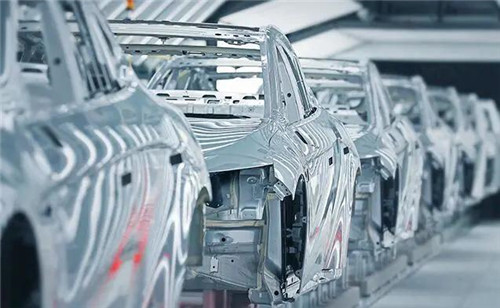
At present, it has become a general trend that the body, four doors and tailgate structural parts are changed to one-piece die casting parts. The lightweight aluminum alloy low-pressure casting process is mostly used for the chassis sub-frame and suspension parts. The seat structure has die casting technology and market potential.
According to forecasts by professional organizations, it will take 10 to 15 years for integrated die casting car bodies to reach 90% of use rates. Assuming that in 2030, integrated die casting will have a use rate of 70% in new energy vehicles and 20% in the field of fuel vehicles. It is expected that in 2030, the total investment in new die casting machines and systems for the global body plus door structure is about 173.5 billion RMB, and the total investment in die casting molds is 36.3 billion RMB. The industrial CAGR is 60% in the next 10 years. At the same time, the large-scale die casting machine will bring new demands in many fields, and the scope of application is broad. The integrated die casting process has the potential to extend to multiple fields.

Tesla's Fremont plant in California
On September 22, 2020, at the Tesla's Battery Day conference, Musk introduced that Tesla Model Y would adopt an integrated die-cast rear floor assembly, which could reduce the weight of the lower car body assembly by 30%, and the manufacturing cost was decreased by 40%. In addition, Tesla's next plan was to use 2 to 3 large die casting parts to replace the entire lower body assembly composed of 370 parts. The weight would be further reduced by 10%, and the corresponding driving mileage could be increased by 14%.

With the delivery of the first batch of brand-new Model S at Tesla's California Fremont plant, it means that Tesla is one step closer to replacing the entire lower body assembly composed of 370 parts with 2 to 3 large die casting parts. The battle of Tesla using one-piece die casting technology to challenge the traditional stamping and welding processes of the automobile manufacturing revolution has begun.
It is worth mentioning that the stamping workshop of traditional automobile manufacturers is mainly responsible for the production of large-scale outer covers with high-quality requirements, such as side panels, engine covers, fenders, door outer panels, etc. The internal structural parts are manufactured by suppliers all over the country and purchased by main engine plants.

Traditional welding of automobile production
After the workers of the welding shop receive the covering parts from the stamping shop and the supplier's structural parts and sub-assemblies, they assemble or connect them to form the body-in-white assembly (BIW) of the car. The connection here includes welding, riveting (used at the steel-aluminum lap joint) and gluing (Sealant is responsible for sealing, and structural glue is responsible for bonding). The painting workshop is responsible for the anti-corrosion and painting of the BIW after the welding is completed, and the assembly shop is responsible for assembling the electrical, interior and exterior decoration, power assembly and other components onto the painted BIW. Tesla's new Model S adopts the same integrated die casting process as Model Y. All parts are made by a die-cast process at once. The number of parts is reduced by 79 compared to Model 3, and that of the welding spot is reduced from 700 to 800 to 50. Tesla's integrated die-cast rear floor assembly does not require heat treatment due to the use of the new alloy. The manufacturing time of the traditional process is from 1 to 2 hours, and the new integrated die casting process is reduced to 3 to 5 minutes. The rear floor assembly can be directly supplied in the factory.
This means that from the review of suppliers, procurement of stamping parts, manufacturing of stamping dies, use of stamping equipment to the manufacturing of welding fixtures, use of welding guns, development of inspection tools, and the logistics and transportation of parts, all traditional stamping and welding supply chain have been canceled.

There was a lot of controversy for Tesla's integrated die casting parts concerning materials, processes, and mold design. In terms of structure, the more complex the part and the more severe the changes in molded surface and cross-section are, the higher the requirements for structural parameters such as draft angles, insertion angles, vents, ejection methods and shrinkage directions are higher. Speaking of the process, the larger the size and the greater the thickness of the die casting part are, the more stringent the control of the process parameters becomes, such as filling cavity speeds of liquid metals, fluid states, injection specific pressure and injection speeds. As for the equipment, the equipment is required to have a more precise servo control system, higher threshold equipment parameters such as injection pressure and clamping force as well as molds with greater resistance to impact deformation in order to meet the demanding process requirements. All in all, the more variables are, the greater the impact on the quality and accuracy of parts becomes. People have doubts about the service of Tesla's one-piece die casting parts.
This time, the delivery ceremony of the first batch of brand-new Model S at Tesla's Fremont plant in California has once again verified that the one-piece die casting process will become the advantage of producing leading one-piece vehicles in the future, and this trend is continuously accelerating at home and abroad. Manufacturing equipment of traditional stamping plus welding BIW is mainly presses, stamping dies, industrial robots, and related welding equipment. After a one-piece die casting process, the core equipment becomes a die casting machine and a die casting mold.

At present, it has become a general trend that the body, four doors and tailgate structural parts are changed to one-piece die casting parts. The lightweight aluminum alloy low-pressure casting process is mostly used for the chassis sub-frame and suspension parts. The seat structure has die casting technology and market potential.
According to forecasts by professional organizations, it will take 10 to 15 years for integrated die casting car bodies to reach 90% of use rates. Assuming that in 2030, integrated die casting will have a use rate of 70% in new energy vehicles and 20% in the field of fuel vehicles. It is expected that in 2030, the total investment in new die casting machines and systems for the global body plus door structure is about 173.5 billion RMB, and the total investment in die casting molds is 36.3 billion RMB. The industrial CAGR is 60% in the next 10 years. At the same time, the large-scale die casting machine will bring new demands in many fields, and the scope of application is broad. The integrated die casting process has the potential to extend to multiple fields.
Related News
- Impact of Heat Treatment on Mechanical Properties and Thermal Conductivity of ZL102 Alloy
- Impact of T6 Heat Treatment on ADC12 Aluminum Alloy Properties
- Enhancing the Mechanical Properties of ADC12 Aluminum Alloy via T6 Heat Treatment
- Die-Casting Process Design of Valve Bodies for Automobile Oil Cylinder Parts
- Temperature Field Simulation & Optimization of Automotive Housing Die Castings
- Research Status of High-Impact Aluminum Alloys Domestically and Internationally
- Die-cast Aluminum Castings for High-speed Rail Rocker Arm Shells
- Aluminum Alloys for Automobile Body Panels
- Analysis and Measures of Internal Shrinkage Cavities in Aluminum Die Castings
- Advantages of Aluminum Alloys in Lightweight Automobiles


